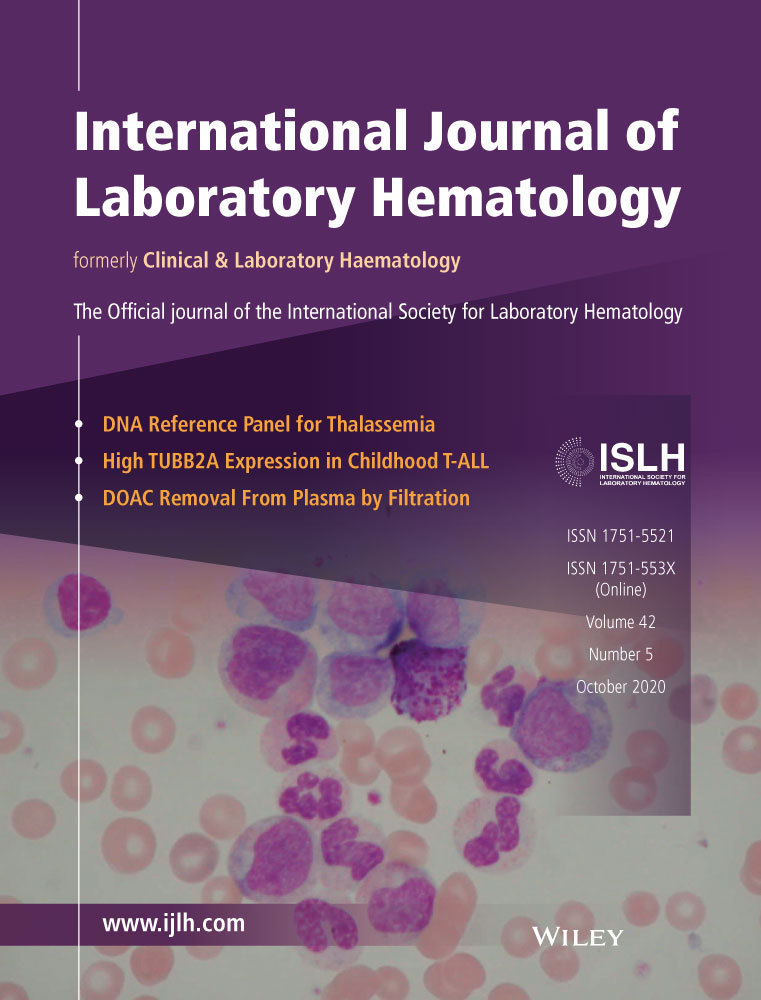Two homozygous missense mutations in ITGB3 gene as a cause of Glanzmann Thrombasthenia in four consanguineous Pakistani pedigrees
Tooba Ali and Saira Gul contributed equally to this study.
Funding information
This work was supported by Higher Education Commission of Pakistan (grant number NRPU-3888 to SK). The funding body had no role in the design of the study and collection, analysis, and interpretation of data.
Abstract
Introduction
Glanzmann thrombasthenia (GT) is most common of inherited platelet disorders, resulting from quantitative/qualitative defects in platelet surface integrin αIIbβ3, encoded by ITGA2B and ITGB3 genes. Little is known about clinical and molecular characteristics of GT patients from highly consanguineous Pakistani population.
Methods
This study analyzed the clinical and molecular spectrum of six GT patients from four unrelated but consanguineous families. Platelet surface expression of αIIbβ3 integrin was determined using flow cytometry analysis. ITGA2B and ITGB3 genes were screened for causative mutations by DNA sequencing. Detected mutations were characterized for their pathogenicity using a variety of in silico tools.
Results
Glanzmann thrombasthenia patients in this study generally presented early in life, had a severe course of clinical disease with transfusion dependency for management of bleeding episodes. Molecular analysis revealed 2 homozygous missense mutations in ITGB3 gene, c.422 A˃G (p.Y141C) in three GT patients from a single pedigree with familial segregation and c.1641 C>G (p.C547W) in three unrelated GT patients from three families manifesting type I GT with severe reduction in platelet αIIbβ3 levels. In silico pathogenicity predictions, multiple sequence alignment and 3D protein modeling unanimously suggested deleterious nature of the detected mutations, possibly due to aberrant disulfide bonding. Of note, clinical diversity was observed even among GT patients with same mutation in GT1 family.
Conclusion
This study provides an initial yet important account of clinical and genetic characterization of GT in local patients which may spark further studies to help molecular diagnosis, optimal disease management, and genetic counseling based prevention efforts.
CONFLICT OF INTEREST
The authors have no competing interests.




